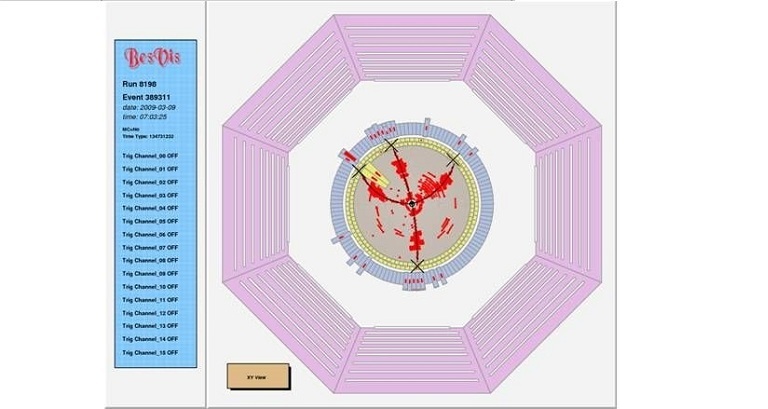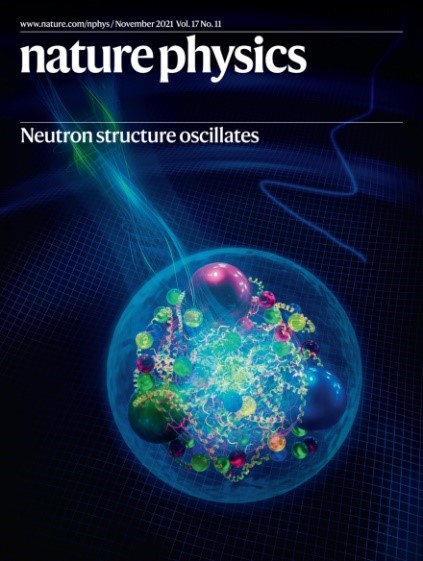BESIII reports the most precise measurements of strong-phase parameters in D->KS/Lπ+π-
The BESIII collaboration has reported the most precise measurements to date of the relative strong-phase parameters in decays of neutral D mesons. These results are presented in two articles published in the journals Physical Review Letters and Physical Review D on June 15.
The strong-phase parameters, which result from the interactions of hadronic final states, cannot be reliably calculated in theory and must be determined experimentally. The new BESIII results reflect the difference of two strong phases of a D meson formed by a charm (c) quark and an anti-up(u-bar) quark, relative to its anti-particle, the D-bar meson, decaying to the same final state. Among these final states, the strong-phase parameters in KSπ+π- are exceptional, providing key inputs in the determination of some of the fundamental parameters in the standard model (SM) of particle physics. Prominent examples are the angle γ in the unitarity triangle describing the phase of the mixing of the first and third families of the quarks, and the mixing parameters describing the oscillations between neutral D and D-bar mesons. Additionally, a precision measurement of γ provides a benchmark for tests of the SM and can be used as a probe to search for evidence of physics beyond the known standard model.
In 2009 and 2010, CLEO at the Cornell Electron Storage Ring presented the first measurements of the strong-phase parameters by using 0.82 fb-1 electron-positron annihilation data. The limited precision of these parameters translates into a dominant systematic uncertainty for the measurement of γof approximately 4 degrees. In the next decade, the statistical uncertainty of γ is expected to be 1.5 degrees or less, leading to measurements where the overall precision will be limited by the strong-phase inputs. Hence precision measurements of strong-phase parameters are a high priority and are critical for a range of γ measurements.
At present, BESIII is the only running machine which can collect data at the production threshold of D0D0-bar meson pairs. Here, the produced D0 and D0-bar meson pairs are produced in a quantum-correlated state, giving experimental access to the strong phase difference. The new results make use of 2.93 fb-1 of data collected with the BESIII detector. To better utilize data, the BESIII team explored several methods to improve the analysis by incorporating more hadronic D decays to increase statistics, extending the partial reconstruction of events to improve signal efficiency, and taking the effects of bin migration into account to reduce possible deviations of the results. These improvements are critical to provide better precision and accuracy compared to previous measurements. Using the new BESIII results, the dominant systematic uncertainty on the value ofγcan be reduced to around 1 degree, which is approximately a factor of three smaller than was possible with the CLEO measurements. This will ensure that the anticipated statistical improvements in the measurements of γ at the LHCb and Belle II experiments over the next decade will have a deep impact on precision tests of the standard model.
BESIII papers:
https://journals.aps.org/prl/abstract/10.1103/PhysRevLett.124.241802
https://journals.aps.org/prd/abstract/10.1103/PhysRevD.101.112002

The strong-phase parameters ci and si measured at BESIII (red dots with error bars), the predictions of a model derived from a combined Babar and Belle measurement in 2018 (black open circles) and the results of CLEO (green open squares with error bars). The left, middle and right plots show results from the equal ΔδD, optimal and modified-optimal binnings, respectively. The circle indicates the boundary of the physical region c2i+s2i=1.
Contact Information
Mr. Guo Lijun
ljguo@ihep.ac.cn

